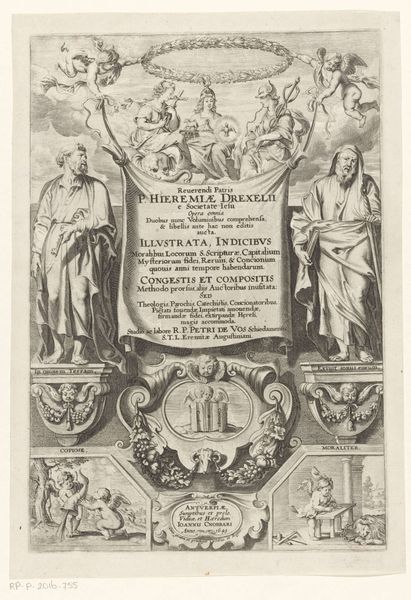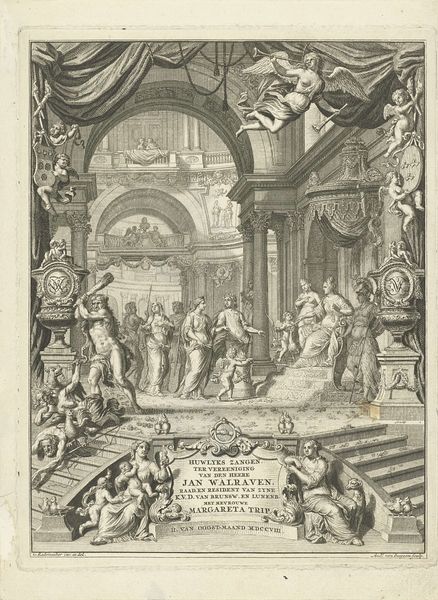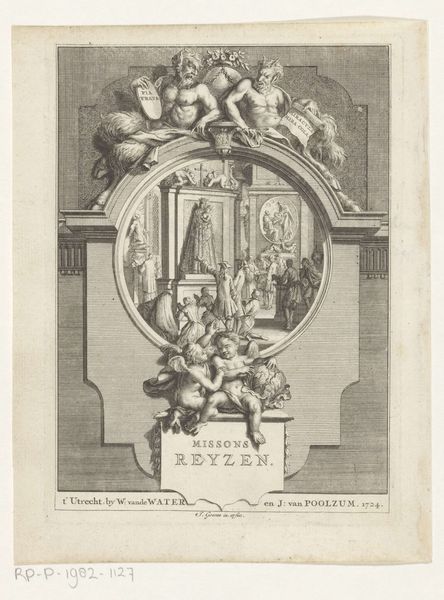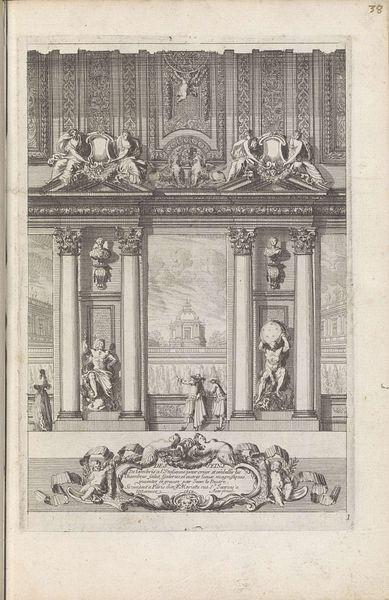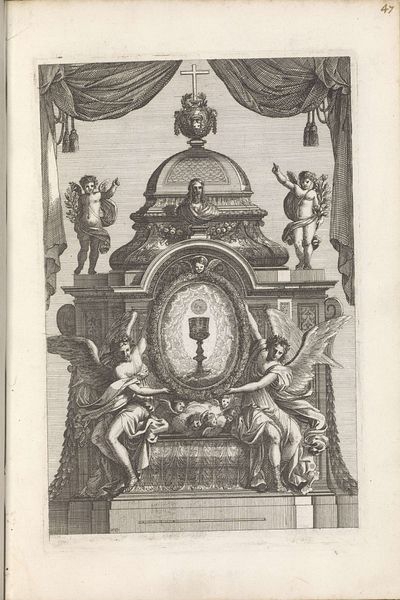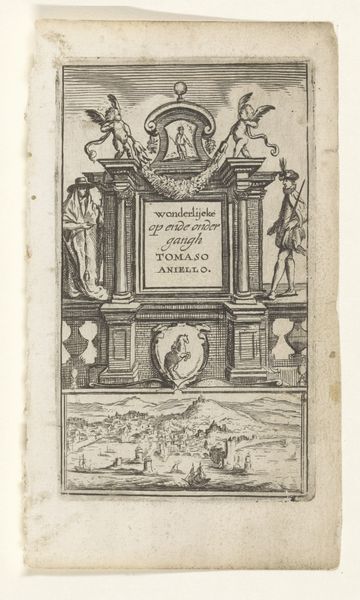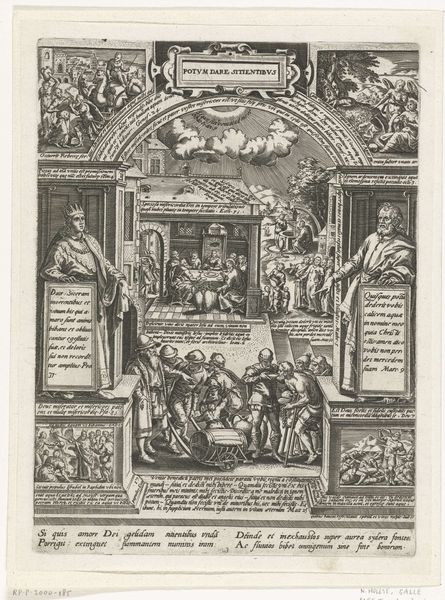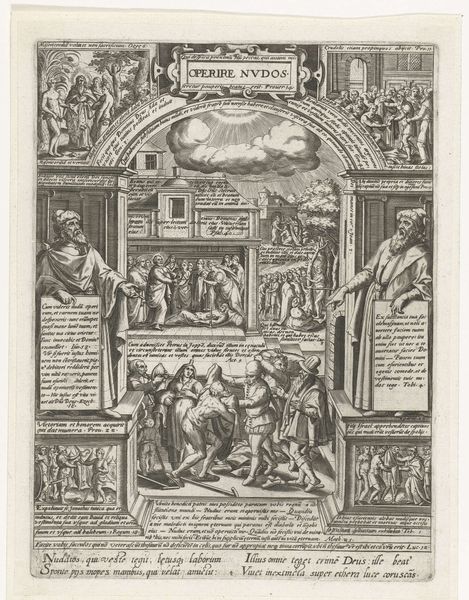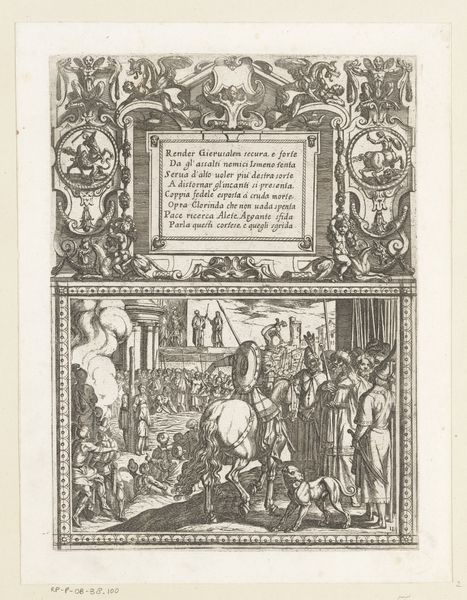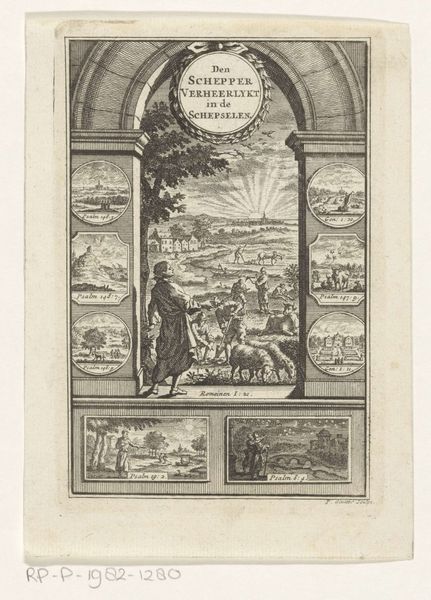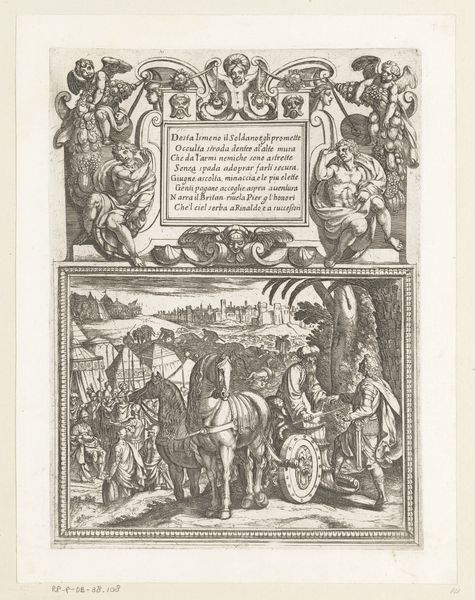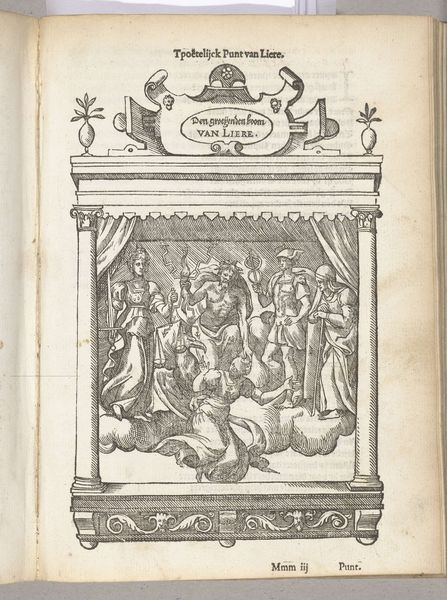
print, engraving
#
baroque
# print
#
figuration
#
line
#
history-painting
#
decorative-art
#
engraving
Dimensions: height 213 mm, width 145 mm
Copyright: Rijks Museum: Open Domain
Curator: We're standing before a print entitled "Zeshoekige omlijsting," or "Hexagonal Frame," created by Jean Lepautre around 1655-1657. Editor: The intricacy is captivating. The detail, the weight of line giving such three-dimensionality! And look at how that weighty baroque frame almost overwhelms the landscape it surrounds. Curator: Indeed, Lepautre was a master of the Baroque style. His work is fascinating, blending line work with decorative arts; notice how the figures are intertwined within that dense frame, reflecting that era’s love of opulence. Editor: The frame is not merely decorative; it’s dynamic. See how those sculpted figures at each corner appear to animate and support the central image? It presents such a theatrical proscenium for the rather understated scene within. How does the framing interact with history-painting? Curator: Here, Lepautre really showcases Baroque principles. The frame, while "surrounding" history painting, is essentially independent of that Roman landscape that takes center-frame within. Lepautre printed many engravings used as designs for paneling, and prints were made widely available to workshops. This reflects an evolving printing trade aimed to offer more art as visual reference for architecture. Editor: And what of the people depicted in the inner tableau? We have a group engaged, one pointing towards a mountainscape as the city stairs lead up to nowhere! They become miniaturized players. Lepautre uses that contrast of scale, making it look even more magnificent. The frame dominates both through its detail and visual dynamism. Curator: That contrast, I believe, speaks to Baroque’s emphasis on grand narratives but with a relatable connection for audiences; this composition places humanity both within grand landscapes, and within everyday settings. It elevates common narrative through detail. Editor: Considering its context within the decorative arts as well, this engraving shows us how aesthetics and everyday life during the mid-17th century were closely intertwined in workshops, especially in France. Curator: Precisely. It underscores how accessible, distributed printing influenced culture, impacting the visual language across the continent. Editor: The push and pull between frame and subject, miniature history, decorative line work - a beautiful dance of visual elements! Curator: Agreed; a prime exemplar of the Baroque aesthetic at play, prompting us to observe familiar subjects in a new light.
Comments
No comments
Be the first to comment and join the conversation on the ultimate creative platform.

